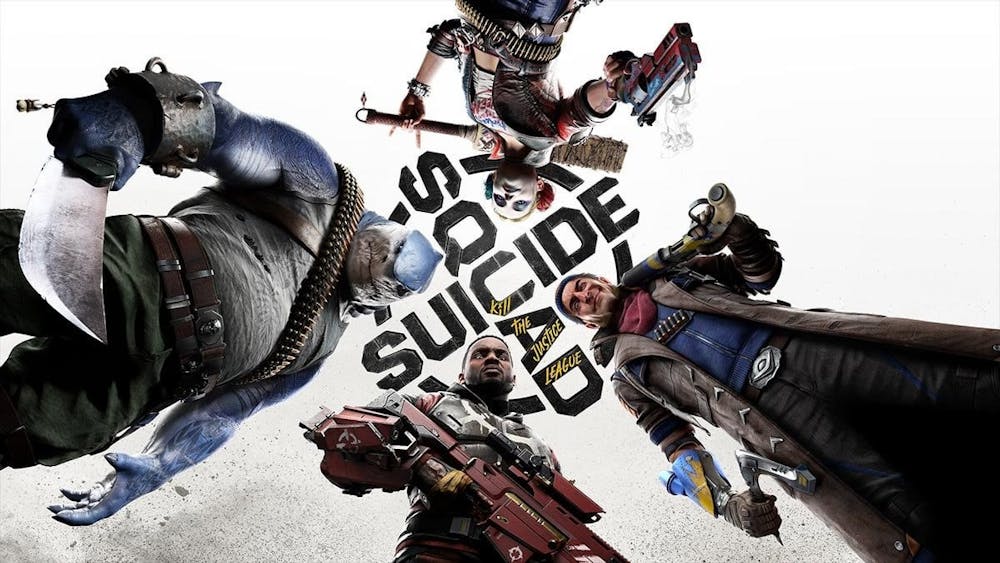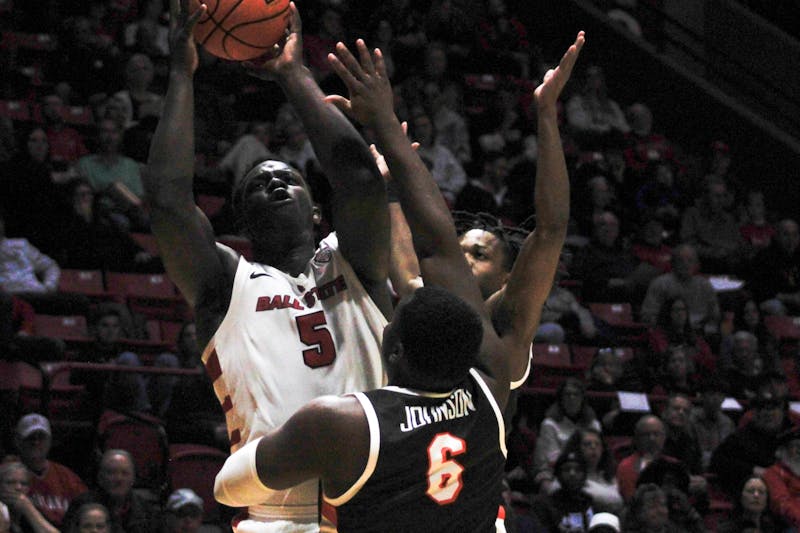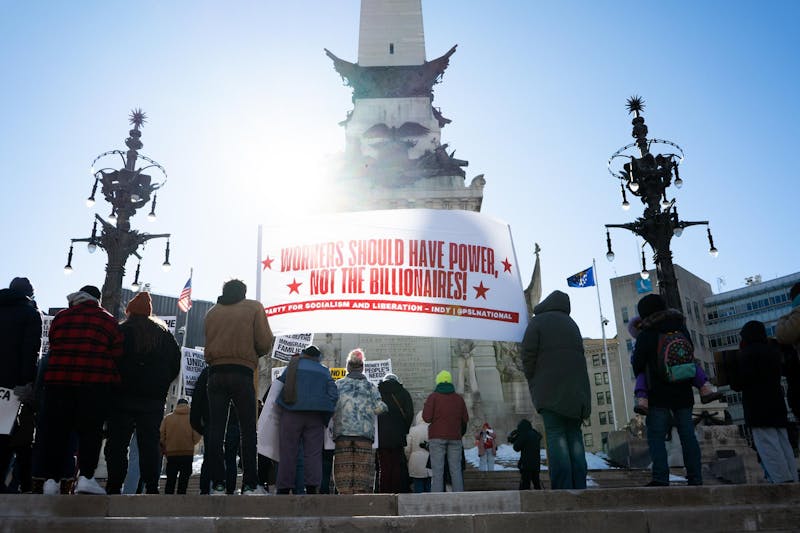The opinions and views expressed in this article are those of the author and do not reflect the opinion of Byte or Byte’s editorial board.
"You either die a hero or live long enough to see yourself become the villain.” – Harvey Dent (Aaron Eckhart)/Bruce Wayne (Christian Bale)
Few lines of dialogue are so popular outside of the source material it heralds from. But this one transcends. Very few people I have met haven’t known this line or at the very least understood it. But one thing is certain: it rings true. And now, we see a villain step forth from the shadows, wearing a face we thought we knew and trusted—like Hush to Bruce Wayne.
In 2009, a video game based upon the comic book caped crusader Batman was released to the public from a small company with only one game under their belt; Rocksteady Studios. The game was titled Batman: Arkham Asylum. And it was a hit. Players could finally play the brooding vigilante, taking out bad guys and meeting familiar—and some not so familiar—villains along the way. Then, in 2011, the sequel, Batman: Arkham City, released to the same, if not better critical and commercial acclaim. Finally, in 2015, the end of the trilogy came with the release of Batman: Arkham Knight. While Arkham Knight had its flaws, it was still critically and commercially successful and praised. In its ending—the true ending: Knightfall—Batman’s identity was revealed to the world and, returning to Wayne manor, he enters before the manor and batcave erupt in several explosions. And in a final scene of a criminal in an alleyway after Bruce Wayne’s death a figure appears on the roof before spreading its cape in a fiery blaze that consumed the buildings around it. But it was never confirmed if this was Batman or someone else—maybe Azazel.
At least, this was the case for 5 years until Rocksteady announced they were working on a new game set in the Arkhamverse—the term for Batman: Arkham affiliated games. This game was revealed to be Suicide Squad: Kill the Justice League. At the time, not much about the narrative of the game was known beyond the main characters and that the game would be set 5 years after the true end of Arkham Knight. As more information came out about the game, excitement for the game rose and fell. And now, as the game is available to the public we see the villains for who they are beneath the mask.
It’s like Batman’s Fists: Swift, Quick, and Punchy
I will admit, I was hesitant to purchase this game. When the combat trailer for the game was released and it was revealed the game was a live-service game—a game in which new content is steadily provided to the players continuously—I was disappointed. This was not what I wanted for an Arkhamverse game. However, I eventually bought the game regardless and I am glad to say I was wrong on a few things.
The gameplay of Suicide Squad: Kill the Justice League is probably one of the best aspects of the game. Where once I thought it would feel sluggish and dull, I was met with the exact opposite. The game follows a predestined story following the titular group of villains forced to do some good. But that is where the fun begins. As each member of the Suicide Squad—Deadshot (Bumper Robinson), Harley Quinn (Tara Strong), King Shark (Joe Seanoa), and Captain Boomerang (Daniel Lapaine)—plays different from one another. Opening the game, the players are forced to play as each character while they work their way through an almost post-apocalyptic Metropolis to group up with the other members of the squad. The players will learn traversal as well as encounter several enemies to get the players acquainted to combat with the character. All of this is to help the players get a feel for the various playstyles available to them before choosing a character to play as—fear not, you are not locked into the character you choose.

Taken from Steam
Deadshot is the marksman who never misses, and his playstyle embodies this with a jetpack for traversal, allowing him to keep a distance from the enemies and pistols, assault rifles, or sniper rifles as his arsenal of artillery. King Shark is a beast from the deep, strong and tough, so he is the “tank” (a term used for characters that can take a lot of damage in a video game). As he is quick to mention in the game, he needs no augments for traversal as his innate superhuman powers grant him the ability to perform great leaps and slams onto enemies—though he may not need traversal augments, he does use weapons; heavy weapons and assault rifles. Opposite of the brute that is King Shark, there is Captain Boomerang, a slimy, two-faced crook who will weasel his way out of anything. Wouldn’t you know it, his traversal—a gauntlet that replicates the speed of The Flash—happens to match that quite fittingly. For his arsenal he is versatile, echoing his desire to do whatever he needs to do in order to make the objective quick, with submachine guns, shotguns, and even sniper rifles (what a loadout, Boomer). Then there is the finale of the quartet; the Clown Princess of Crime—and dare I say my favorite character in the game and all of DC products—Harley Quinn. Harley is not the type to back down from anything (being a bit crazy will do that to ya, kiddos), opting to carve her path as she wants it to be, doesn’t matter what is in her way. As such, she wields submachine guns, pistols, and a trusty bat or mallet (ah, the classics), getting in the face of the enemy as she whomps them. Taking Batman’s grapple gear—the same kind from the Arkham games—she performs deft acrobatic skills to flip, slide, swing, and jump through the city. Though fans may be familiar with the grapple gear, Harley’s maneuverability is highly dependent on the player’s ability to chain together her moveset, letting them move across Metropolis with ease.
It was much to my surprise how much fun each character was to play as, giving me new avenues to explore with how I encountered the game. Each character’s unique abilities and skill trees—yeah, they have skill trees too—makes them distinct from one another. Each skill tree has 3 different playstyles which players can choose to focus on with their build and with help from the game itself. When players look over their skills, they will see a recommended playstyle tag on each skill. This is designed to help players who are new to skill trees or have difficulty crafting a functional character build, letting them quickly choose and continue having fun in the game. Overall, the combat and gameplay were superb, making me question why I ever had doubts on Rocksteady’s skills. Playing as Harley Quinn, I flew from combat zone to combat zone, shooting and batting enemies left and right with a deft agility that made me feel like the character. It was a blast!
Not Full of Titan Formula, but It's Got Some Corrupted Blood…
Suicide Squad: Kill the Justice League being touted as another entry in the Arkhamverse of games is a hefty title to place upon it. And with it comes a legacy that it needs to meet or excel beyond. At the same time, it needs to do justice to the origins the characters draw from while simultaneously building to be something wholly unique. In that same vein, it needs to be able to stand on its own, not having to rely solely on the legacies of either comic, game, or film. So, the real question is: did it manage to do these things? Well… sorta.
To start, let’s discuss the story, then we’ll break things down into the three categories from above. As mentioned previously, the game follows the four members of Task Force X—a covert government initiative to repurpose villains and metahuman criminals to take down high profile threats that regular humans can’t take down—as they are pulled from Arkham Asylum and sent to Metropolis. The reason? To kill the Justice League (shocker, right?). With their lives on the line, the four criminals begin their hunt to take down those once touted as heroes of the world and who have been corrupted by the mysterious alien overlord Brainiac (Jason Isaacs). To start, the group encounters Green Lantern (Dan White), being quickly saved by a then uncorrupt Flash (Scott Porter). After Flash is injured, the group attempts to get him to safety but are quickly picked off by a corrupt Caped Crusader (Kevin Conroy)—who almost kills Harley—before he disappears with Flash. From there, Task Force X must use Lex Luthor’s (Corey Burton) tech to take down and kill a now-corrupted Flash. Score 1 for Task Force X, score 0 for the Justice League.

Following the Flash, the group deals with some multiversal shenanigans before continuing on to take down Green Lantern. Task Force X: 2, Justice League: 0. Returning back to headquarters—which is the Hall of Justice—the group watches as Superman (Nolan North) kills Wonder Woman (Zehra Fazal), who was uncorrupt and was attempting to stop Superman and return him to normal. Following the somber loss of the remaining hero, the Squad goes to Batman’s Metropolis Batcave and capture him. Task Force X: 3, Justice League: 0. Designing gold kryptonite, the Squad defeats the Man of Steel. Whoo hoo! Victory for Task Force X! Right? Nope, because The Squad is then forced to defeat Brainiac… sorry, several Brainiacs (this is where the multiversal stuff gets wonky and shows how the live-service “seasons” will play out).
There is a lot to this game. As is expected from a live-service game. With any live-service game, the story is never quick or easy. It is always drawn out in order to ensure there are plenty of things to do. Plenty of fights. Plenty of weapons. Plenty of upgrades. Plenty of traversal. While the multiversal aspect of the game and story could be done without, it is crucial for this type of live-service game. As—before the game even released—Rocksteady confirmed the first character coming in the first “season” of the game; Elseworlds Joker (not Mark Hamill, sorry, his Joker is dead).
However, let’s get to the brass tacks: does this game meet or exceed the legacy left behind by the Arkham games? No. But that isn’t to say it is bad. For the most part, the game gets the feel of the characters right—with a few moments that don’t. The first time the players encounter Batman is probably one of the most terrifying scenes in any game. Because it plays just like an Arkham game. The only difference being the player is the poor criminal searching in the dark being beaten by a hidden vigilante. And when the players are drugged with Fear Toxin in the Batcave, the scene plays out similarly to the FPS scene in Arkham Knight. Again, terrifying. However, it is still unbelievable to think that Batman, given the fact he had prep time, can be found watching the Squad from a distance, and has the home advantage, manages to get beaten and killed so easily. I mean, this is supposed to be the same man who can go toe-to-toe with extremely tough enemies like Bane, Killer Croc, Titan Joker, Clayface, Ra’s al Ghul, Solomon Grundy, and more, and come out with hardly even a scratch on him. That’s not even mentioning the fact that he has been swarmed by swathes of enemies in Arkham City and still came out on top. Mind you, some of this he did while infected by Joker’s toxic blood! And this game has the audacity to tell me that he got beat by a group of four criminals—three of which are just basic humans with some weaponry?!
Okay, so it isn’t a perfect sequel like we all wanted, but does it draw from and build upon the origins of the characters? Yeah, it does. Really well actually. None of the characters are vastly different from their comic counterparts—Deadshot is still the rugged marksman, King Shark is well… sharky… Captain Boomerang is still a weasel of a criminal mostly out for himself, and Harley is chaotic yet fun with snide remarks and jokes to lighten the mood—and it seems as though Rocksteady really took the time to read a few comics for each character and know how they feel, what their weaknesses are, and even in some cases what some of their small fears are. But how do they fare against their Arkham counterparts? Well… not so spectacularly. See, in the original Arkham games, Deadshot was an easter egg character who looked vastly different—and not like a Will Smith Deadshot knockoff. You never actually faced him in the story. And Harley Quinn is…honestly it is hard to say. Harley Quinn is a chaotic character who seems to change in each game, so I guess I can forgive this game, though the model is not the same in the slightest. King Shark and Boomerang get a pass thanks to this game being their debut within the universe. Due to the nature of this game being a multiverse-based story, it isn’t too far of a stretch to assume that maybe these characters are not the same ones from the Arkham Universe. Only time will tell.
So how does it fare as a standalone title? Meh. I love the Suicide Squad and think this game really captures the feeling of those comics—being comedic, witty, and downright devilish at times—but with the heavy reliance of Arkhamverse Batman and multiversal travel, it feels like a mixed bag. A lot there to be had, but not properly stitched together.
Bring in the Clowns ‘Cause I’m Going Crazy!
Now that I’ve covered the gameplay and the story, I want to talk about the performance of the game. And I’m gonna keep this short and simple because there isn’t too much to say here… actually there is too much to say in this case. Suicide Squad: Kill the Justice League does not run great; I’ll be the first to admit. And I’m playing on PS5. The servers are super slow and in some extreme cases—very few and rare, keep in mind—are so bad that my game has such bad lag that it takes 30 seconds to jitter forward before falling behind again. Sometimes, connection to the servers will be lost meaning that progress is reset. And the loading times to get into the game are egregious. Now, the game is playable mind you, but I mean that in the loosest of terms. And this is only made worse by the fact that Rocksteady, before the release of the game, stated that it is possible to play single player, but they will still need to have an online connection. It’s important to note that the game is multiplayer, but in the sense that you and a friend can play through the story together, not multiplayer like Destiny 2 where everyone around the world is playing together all at once.
Now, it is still early in the lifespan of Suicide Squad: Kill the Justice League, but if Rocksteady doesn’t begin fixing things now, the game will die rather quickly. Because as it stands, the game is playable, but not well.
At the beginning of this article, I mentioned how masks would be shed and the true villains would come to light. And as it stands, the only villain is Rocksteady. They are doing the right things but packaging the game all wrong. But in the darkness, there shines a glimmer of hope. Rocksteady can turn this around and Suicide Squad: Kill the Justice League can be a game that nobody asked for, but one that becomes excellent.

Sources:
IMDb, IMDb, IMDb, IMDb, IMDb, IMDb, IMDb, IMDb, IMDb, IMDb, IMDb
Photos:
Reddit, Steam, IrishIndependent
Contact Aaron Picklesimer with comments at ampicklesimer@bsu.edu





The Daily News welcomes thoughtful discussion on all of our stories, but please keep comments civil and on-topic. Read our full guidelines here.